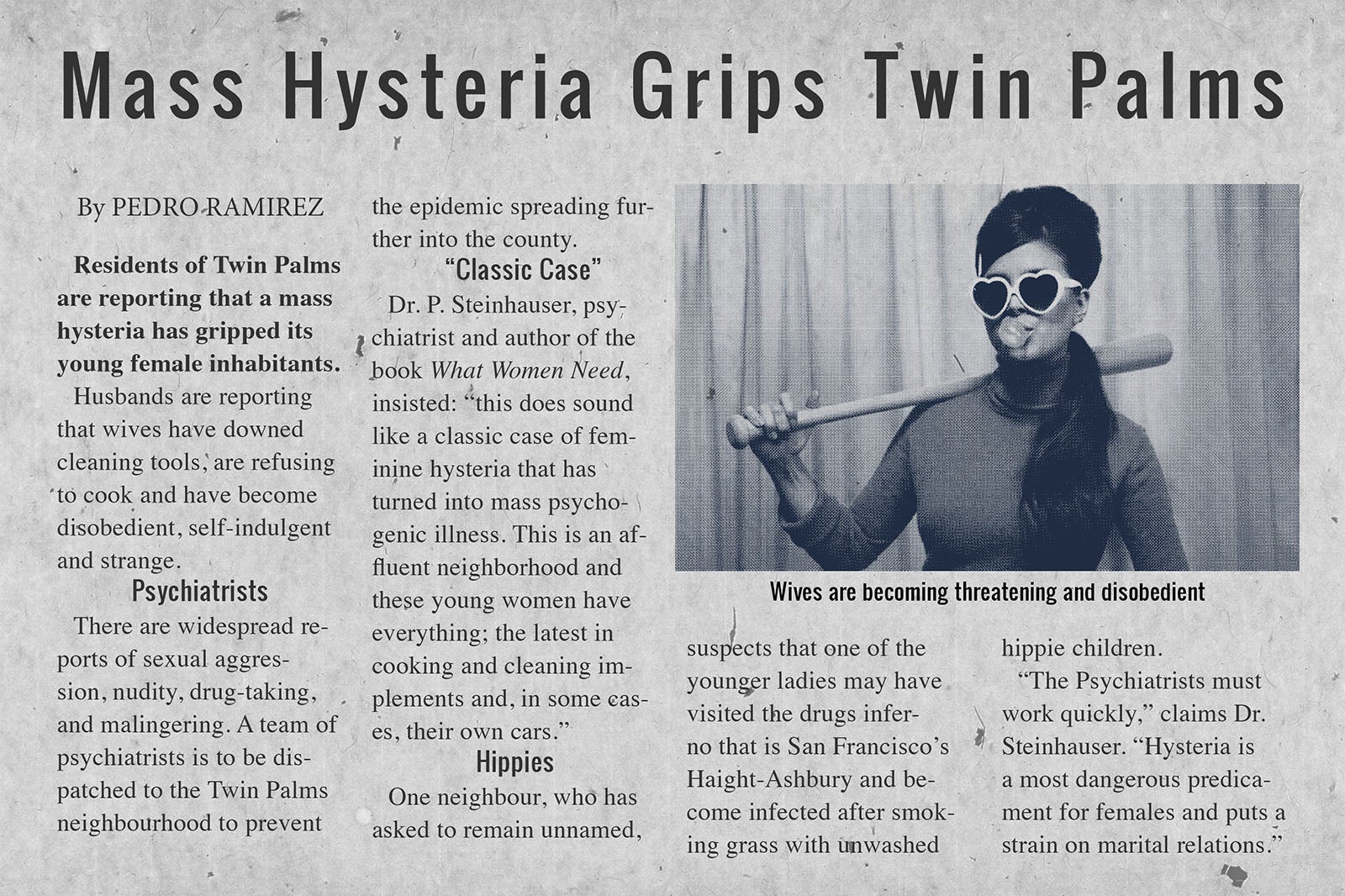Twin Palms: British photographer creates feminist satire of 1960s California
'I tried to think what might happen if a more modern Western woman, with the progress that has been made, was suddenly put into these constrained environments,' says Matt Henry, 'how she might react'
Your support helps us to tell the story
From reproductive rights to climate change to Big Tech, The Independent is on the ground when the story is developing. Whether it's investigating the financials of Elon Musk's pro-Trump PAC or producing our latest documentary, 'The A Word', which shines a light on the American women fighting for reproductive rights, we know how important it is to parse out the facts from the messaging.
At such a critical moment in US history, we need reporters on the ground. Your donation allows us to keep sending journalists to speak to both sides of the story.
The Independent is trusted by Americans across the entire political spectrum. And unlike many other quality news outlets, we choose not to lock Americans out of our reporting and analysis with paywalls. We believe quality journalism should be available to everyone, paid for by those who can afford it.
Your support makes all the difference.In Twin Palms, California, a feminist revolution is about to erupt.
The year is 1967 and the town's young female inhabitants have been gripped by a “mass hysteria” that threatens the town's suburban patriarchy. “There are widespread reports of sexual agression, nudity, drug-taking, and malingering,” screams one newspaper. “The psychiatrists must work quickly,” a doctor claims.
The kitsch Californian suburb is fictional, of course. A satirical series of 30 images, “Twin Palms” dramatises the shift in gender relations seen during the period – invoking strong feminist themes with a tongue-in-cheek aesthetic.

“Gender relations were evolving in this period,” says British photographer Matt Henry, “though you’d find few dominant, self-aware female characters of this sort represented in the male-dominated movie and television industries. It became interesting to me to transplant a more modern psyche back into this mid-century environment; to represent a spirit perhaps present but not yet fully realised.”
Visiting Palm Springs in California, Henry, 38, says he saw the potential for storytelling. ”I began thinking about the history of all those people that had lived in there; what the housewives might be doing while the husbands are out at work, or away drinking late with friends.“
Mixing real locations with studio setups, Henry exagerrates the town's eerie perfection by introducing garish, "bubblegum" colours for a playful, 1960s feel.
Retro interiors are intermixed with emotional or bored-looking housewives, ready to hit the bottle. However, says Henry: ”What I didn’t want to do was recreate the 1960s housewife as we all know her—Betty Draper from Mad Men stuck at home with the kids while Don works his way through his secretaries. “I wanted to give the protagonists a little more life, depth and positivity by letting them be more reckless and self-absorbed than was probably allowed.”
One strong favourite is the image of a brunette woman, shot outside the Elvis Honeymoon Hideaway, where Elvis and Priscilla Presley lived and later honeymooned in. “The light was dropping fast,” says Henry, “and I was struggling to get the shot I wanted, but the model I was working with at the time just shot a look up that showed the whites of her eyes, and it was perfect. It really captured the inner strength and defiance that I wanted for the whole series.”
While the series offers humour, and arguably a primitive approach to gender and marriage, according to the photographer, it also aims to make the viewer question how generations of the future might come to view current attitudes to gender.
“Gender relations and the notion of gender itself are sources of conflict that are a long way from resolved,” claims Henry. “It’s a positive thought to consider that the concept of gender will evolve to the point that one day we might look back in mockery in just the same way.”
Matt Henry is represented by Flatland Gallery, Amsterdam. His Twin Palms series is on show at NRW-Forum in Düsseldorf from November 19 to January 15, 2017.
Hair — Simon Webster and Dawn Mattocks
Make Up — Hannah Wing and Dawn Mattocks
www.matthenryphoto.com
Join our commenting forum
Join thought-provoking conversations, follow other Independent readers and see their replies
Comments